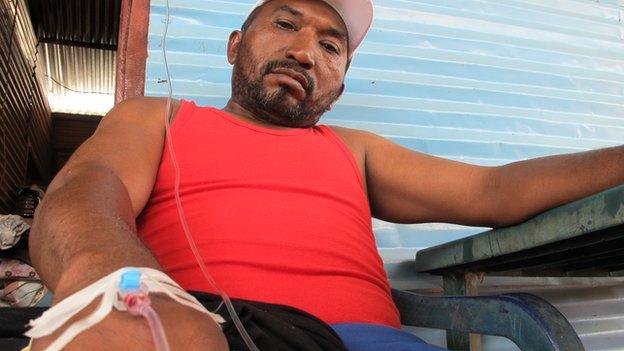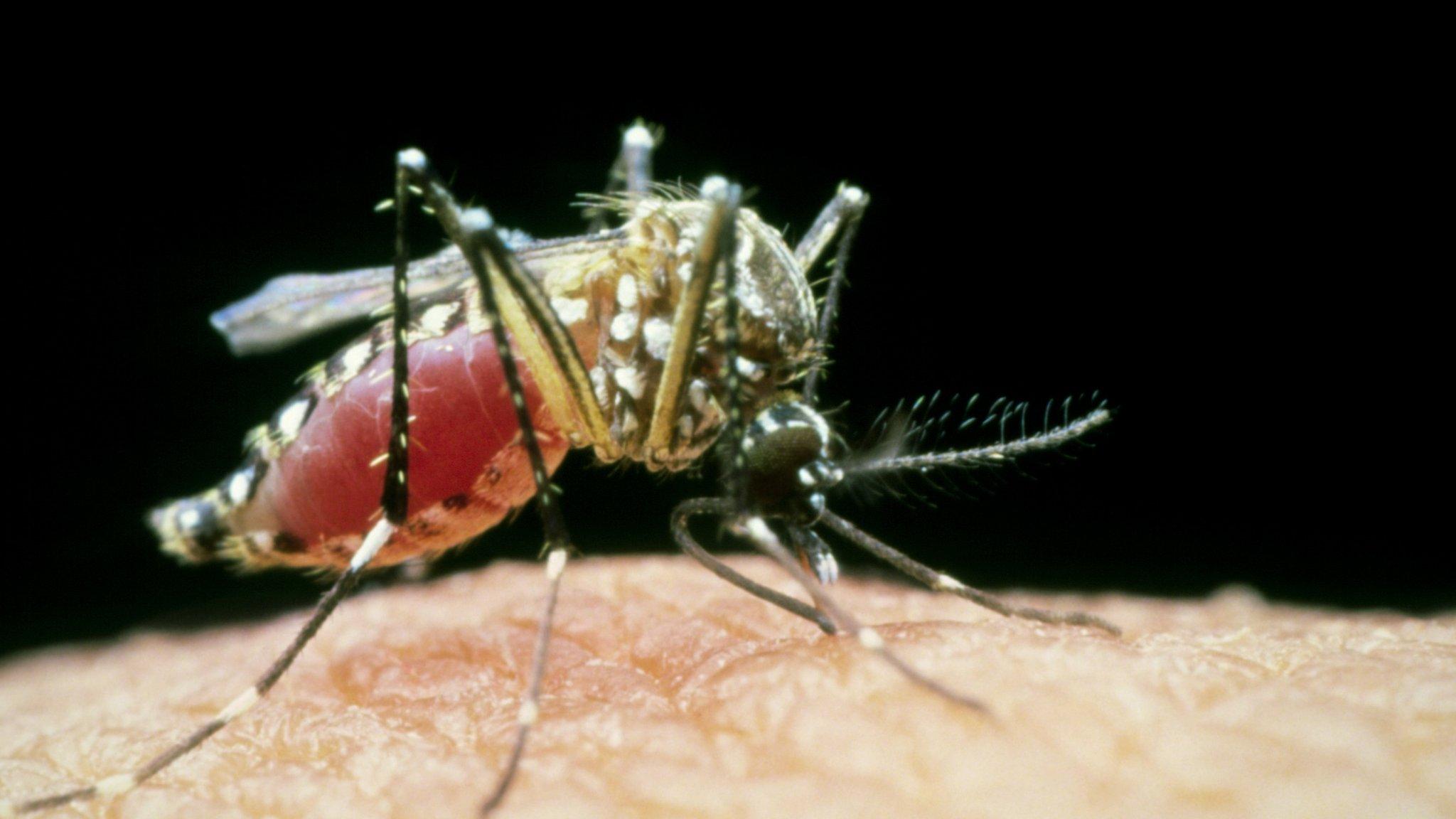Early sign of yellow fever could lead to new treatment
- Published

Scientists analysed the gene activity in macaques after they were infected with yellow fever
Picking up early signs of yellow fever, an infectious disease which can be fatal, could lead to a new treatment and better diagnosis, a study said.
Writing in the journal PLOS Neglected Tropical Diseases, external, US scientists looked at the virus in macaques, in the first study in primates for more than 20 years.
They found out how the virus damages the body and which genes it disrupts.
The World Health Organisation (WHO) said the study was encouraging.
The virus, endemic in tropical areas of Africa and Latin America, can cause jaundice and kidney failure and mainly targets the liver.
It kills 50% of people infected if they are not treated, the WHO said, external. There are around 200,000 cases of the infection every year.
No approved drug
Researchers at the University of California, Riverside, gave 20 macaques yellow fever. A control group were given the virus and the vaccine, to compare the results.
The study said within 24 hours of the virus, 90% of the animal's lymphocytes, or white blood cells, had been lost in all 20 animals, leaving it vulnerable to infection.
Yellow fever does not present in humans until quite a late stage, said lead author Ilhem Messaoudi in California, and there are no approved drugs to treat it, meaning early diagnosis is crucial for survival as it allows for rehydration and supportive care.
She said it was extremely challenging to get the vaccine to people in remote areas who need it and that it was not safe for babies and the elderly.
The loss of white blood cells occurred before changes in the liver, the study found, meaning if this translated to humans, doctors could spot it earlier and the chances of survival could be improved.
'Quick analysis?'
Researchers also looked at the macaques' genes and 800 were found to have been switched on within 72 hours of the initial infection, compared to the control group.
Twenty-five percent of the monkeys survived the infection, said Ms Messaoudi. She said she would now be looking at what it was, genetically, in those animals that made them survive, with a view to developing a drug.
She said: "Can we use gene expression as a diagnostic in the clinic - could we run a quick analysis on patients' white blood cells and determine which infected person is at high or low risk?
"Supportive care would follow for all patients, but it would change the dynamics of how aggressive the treatment needs to be."
William Augusto at the WHO said: "This research work is at an early stage and, although encouraging, will need additional work in both animal models and on human beings to better estimate its implications in terms of diagnostics and antiviral therapy."
- Published24 August 2014

- Published18 December 2012

- Published15 March 2012
